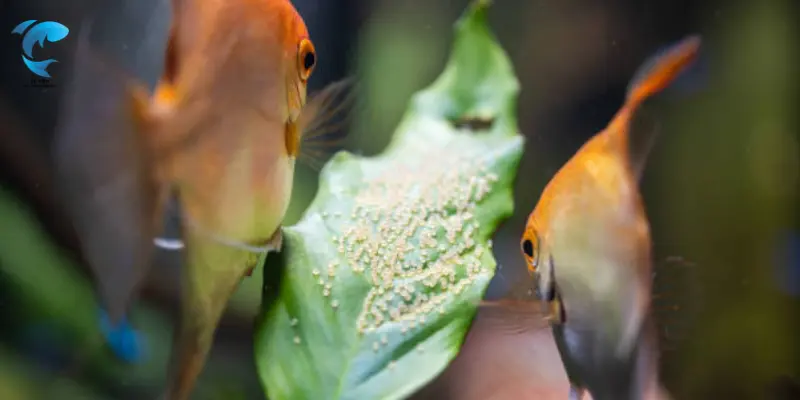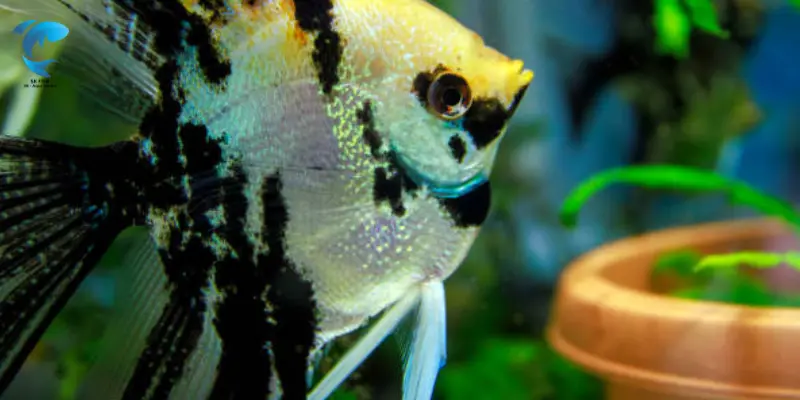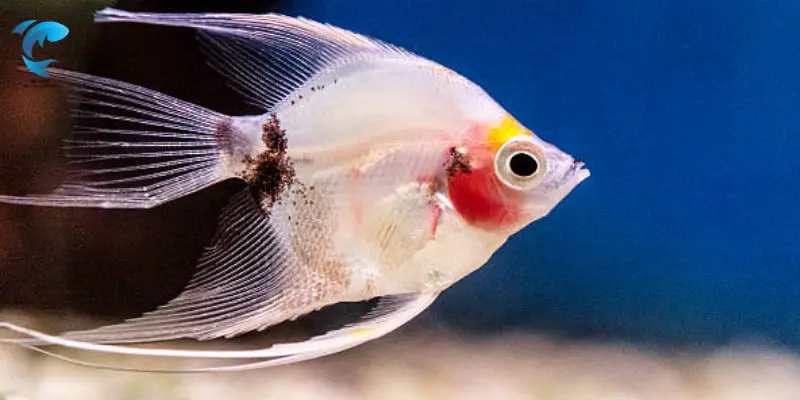How Often Does Angelfish Lay Eggs? Key Factors Explained
Published: 31 Mar 2025
Angelfish are popular for many aquarium enthusiasts due to their stunning appearance and relatively easy care. If you’ve ever wondered about the reproductive habits of angelfish and how often they lay eggs, you’ve come to the right place.
In this detailed guide, we’ll explore everything you need to know about the egg-laying process, factors influencing how often they breed, and tips to ensure successful angelfish breeding.
Whether you’re a new aquarium owner or an experienced breeder, understanding how often your angelfish lay eggs and what to expect during their reproductive cycle is crucial for creating a thriving and healthy aquarium. Let’s dive in and answer the burning question: How often does angelfish lay eggs?
1. Introduction to Angelfish Egg-Laying
Angelfish, mainly freshwater fish, are known for their beautiful, elegant fins and peaceful temperament. They are native to the Amazon River Basin in South America and are highly sought after for home aquariums. Understanding their breeding behavior is one of the most fascinating aspects of keeping angelfish.

Angelfish are relatively easy to breed in captivity, and their ability to consistently lay eggs makes them an interesting species for aquarists. However, how often they lay eggs can depend on various factors, including angelfish care, environment, and overall health.
In this article, we’ll break down how frequently angelfish lay eggs, how to care for them during the breeding process, and what you can do to optimize conditions for successful breeding.
2. Angelfish Reproductive Cycle Overview
Sexual Maturity
Before delving into how often angelfish lay eggs, it’s essential to understand when they reach sexual maturity. Angelfish typically reach sexual maturity between 6 months and 1 year, although some may mature later, depending on factors like size and tank conditions.
You may notice behavioral changes in your angelfish in the aquarium at this stage, such as increased aggression or establishing a breeding pair. Male and female angelfish will begin to show distinct differences, including size, body shape, and behavior.
Size and Age for Breeding
The angelfish size is another determining factor in their ability to lay eggs. Most angelfish types are ready to breed when they reach a size of around 3 to 4 inches (7.5 to 10 cm) in length. However, a larger angelfish tank size and proper nutrition can lead to quicker maturation.
When male and female angelfish are paired, they often form a bond, and their breeding cycle begins.
3. Factors Influencing Egg-Laying Frequency
Several factors influence how often angelfish lay eggs. These include water quality, temperature, diet, tank setup, and overall health. Let’s look at each factor in detail:
Water Quality
The water quality in your angelfish tank is crucial for successful egg-laying. Poor water quality can stress the fish, leading to irregular breeding cycles or even a complete cessation of egg-laying. You should aim for clean, well-maintained water with stable parameters, including angelfish water parameters such as pH, hardness, and ammonia levels.
Regular water changes and proper filtration are essential to keep your angelfish healthy and encourage frequent breeding.
Water Temperature and pH
Angelfish are tropical fish that thrive in water temperatures between 76°F and 84°F (24°C to 29°C). A stable, warm environment encourages egg-laying and fosters healthier fish. Angelfish temperature should be maintained consistently to avoid stressing the fish.
In addition to temperature, the pH of the water should be slightly acidic to neutral (6.5 to 7.5). Deviations from this range can affect the breeding behavior of your angelfish.
Tank Setup

Another critical factor is the angelfish tank setup. Angelfish prefer tanks with plenty of space to swim and hiding spots for breeding. A well-planted angelfish aquarium with flat surfaces, such as smooth rocks or leaves, is a perfect breeding ground. Ensure your angelfish tank size is large enough (at least 20 gallons per pair) to accommodate the fish and their eggs.
Diet
A healthy angelfish diet rich in protein is crucial for egg production. Feed your angelfish various foods, such as high-quality flakes, live or frozen foods like brine shrimp, and high-protein pellets. Proper nutrition supports reproductive health and can encourage frequent breeding.
4. How Often Do Angelfish Lay Eggs?
Once you’ve created the ideal environment for your angelfish, you may start wondering: How often do angelfish lay eggs?
Typical Egg-Laying Frequency
On average, angelfish will lay eggs every 2-3 weeks once they’ve reached sexual maturity and established a pair bond. However, it’s important to note that not all pairs will lay eggs on this exact schedule. Some angelfish may lay eggs more frequently, while others may take longer between spawns.
For healthy angelfish well cared for in a stable environment, egg-laying frequency is generally predictable, but environmental changes or health issues may disrupt the cycle.
Variations in Frequency
Several factors can affect how often angelfish lay eggs, including:
- Health: Healthy angelfish are more likely to breed consistently. If they are sick or stressed, their egg-laying frequency may decrease.
- Tank Conditions: Improper water temperature, poor water quality, or inadequate tank size can negatively affect breeding frequency.
- Breeding Age: Older or more experienced breeding pairs may lay eggs more consistently than younger or less experienced ones.
5. Angelfish Egg-Laying Process

The process of egg-laying in angelfish is fascinating to observe. Here’s what happens:
Preparation for Breeding
Before laying eggs, angelfish clean a flat surface, such as a leaf or a smooth rock. The male and female work together to prepare the site for their eggs. The female deposits eggs on the cleaned surface while the male fertilizes them.
Egg Laying and Fertilization
The egg-laying process is relatively straightforward. The female angelfish lays clusters of eggs (ranging from 150 to 1000 eggs per spawn), and the male fertilizes them. The eggs are typically small, translucent, and arranged in neat rows.
Number of Eggs
The number of eggs laid can vary based on the age and size of the angelfish. Generally, a mature female will lay between 150 and 1000 eggs per spawn. However, the exact number can fluctuate depending on the condition of the fish.
Egg Color and Fertility
Fertilized angelfish eggs appear pale and translucent, whereas unfertilized eggs may turn white or cloudy. Monitoring the eggs is crucial to prevent fungal infections, which can harm the developing eggs.
6. Stages of Angelfish Eggs
The egg-laying process does not end once the eggs are laid. There are several stages to consider when observing the development of angelfish eggs:
Pre-Hatching
In the pre-hatching stage, fertilized eggs will undergo initial development. As they mature, you will see changes in their color. Typically, the eggs will darken as the embryos inside develop.
Larval Stage
Once the eggs hatch, the angelfish larvae become free-swimming. They rely on the nutrients stored in their yolk sacs at this stage before they begin eating independently.
Fry Stage
As the larvae develop, they will reach the fry stage, swimming and feeding independently. This stage is critical, as the fry must be kept in optimal conditions to thrive.
Final Stage
Finally, as the fry grows, they will resemble adult angelfish. During this time, they should be separated from the adults to prevent aggression.
7. Common Problems with Angelfish Eggs
Unfortunately, not all angelfish eggs will hatch successfully. Here are some common issues to watch out for:
Infertility
If your angelfish eggs are not hatching, it could be due to infertility. This may be caused by poor health in either the male or female or a lack of proper breeding conditions.
Water Quality Issues
Poor water quality can lead to unsuccessful hatching and even fungal growth on the eggs. To avoid these issues, ensure that you maintain proper water parameters.
Fungal Infections
Fungal infections can appear as white, cotton-like growths on the eggs. To prevent fungal growth, remove any unfertilized eggs promptly and consider adding a fungicide to the tank.
8. How to Increase Egg-Laying Success
To ensure that your angelfish lay eggs successfully and raise healthy fry, consider the following tips:
- Maintain optimal water quality and stable angelfish temperature.
- Provide a balanced, nutritious, angelfish diet.
- Offer plenty of hiding spots in your angelfish tank setup to reduce stress.
- Ensure a proper angelfish tank size to accommodate the breeding pair.
9. Conclusion
In summary, angelfish lay eggs every 2-3 weeks, which can vary depending on their health, age, and environmental conditions. By creating the right conditions in your angelfish tank and providing proper care, you can encourage regular egg-laying and successfully raise fry.
FAQ: How Often Does Angelfish Lay Eggs?
Angelfish eggs may not hatch for several reasons, the most common being infertility. The eggs will not be fertilized or hatch if the male or female is infertile. Another reason could be poor water quality or unsuitable environmental conditions. High ammonia levels, incorrect water temperature, or inappropriate pH can hinder proper egg development. Additionally, fungal infections on unfertilized eggs can prevent successful hatching. To improve hatch rates, ensure clean water and proper tank conditions, and monitor the health of both your angelfish.
No, angelfish cannot lay fertilized eggs without a mate. Female angelfish can still lay eggs without a male, but these eggs will be infertile. Hormonal changes in the female trigger the egg-laying process, and if a male is present, the eggs will be fertilized. However, if no male is present to fertilize the eggs, they will not develop into viable fry.
Fertilized angelfish eggs are typically translucent and slightly pale. The eggs will become darker as the embryos develop, allowing you to see the developing fish inside. Unfertilized eggs, on the other hand, will often turn white or cloudy within a few hours after being laid. Removing unfertilized eggs quickly can help prevent fungal infections from spreading to healthy eggs.
Angelfish prefer to lay their eggs at night or early morning. This is when the water is usually calmer, and the angelfish feel more secure to perform their breeding rituals. If you notice your angelfish cleaning surfaces or showing signs of pre-breeding behavior in the evening, it’s a good indicator that they may lay eggs soon. However, the exact timing can vary based on the tank environment and the individual fish.
To encourage your angelfish to breed more frequently, ensure their environment mimics their natural habitat. Maintain stable water temperature between 76°F and 84°F, provide a clean tank with well-planted areas or flat surfaces for egg-laying, and feed them a varied and high-quality diet. A stress-free environment is also crucial for encouraging egg-laying, so avoid sudden changes in water conditions or tank mates that may cause stress. Regular water changes and ensuring proper water parameters such as pH and hardness are essential for creating an ideal breeding environment.

SK Fish is your trusted source for practical fish care tips and delicious seafood recipes. Our team is dedicated to providing reliable, well-researched content for fishing enthusiasts and home cooks alike.

- Be Respectful
- Stay Relevant
- Stay Positive
- True Feedback
- Encourage Discussion
- Avoid Spamming
- No Fake News
- Don't Copy-Paste
- No Personal Attacks



- Be Respectful
- Stay Relevant
- Stay Positive
- True Feedback
- Encourage Discussion
- Avoid Spamming
- No Fake News
- Don't Copy-Paste
- No Personal Attacks





